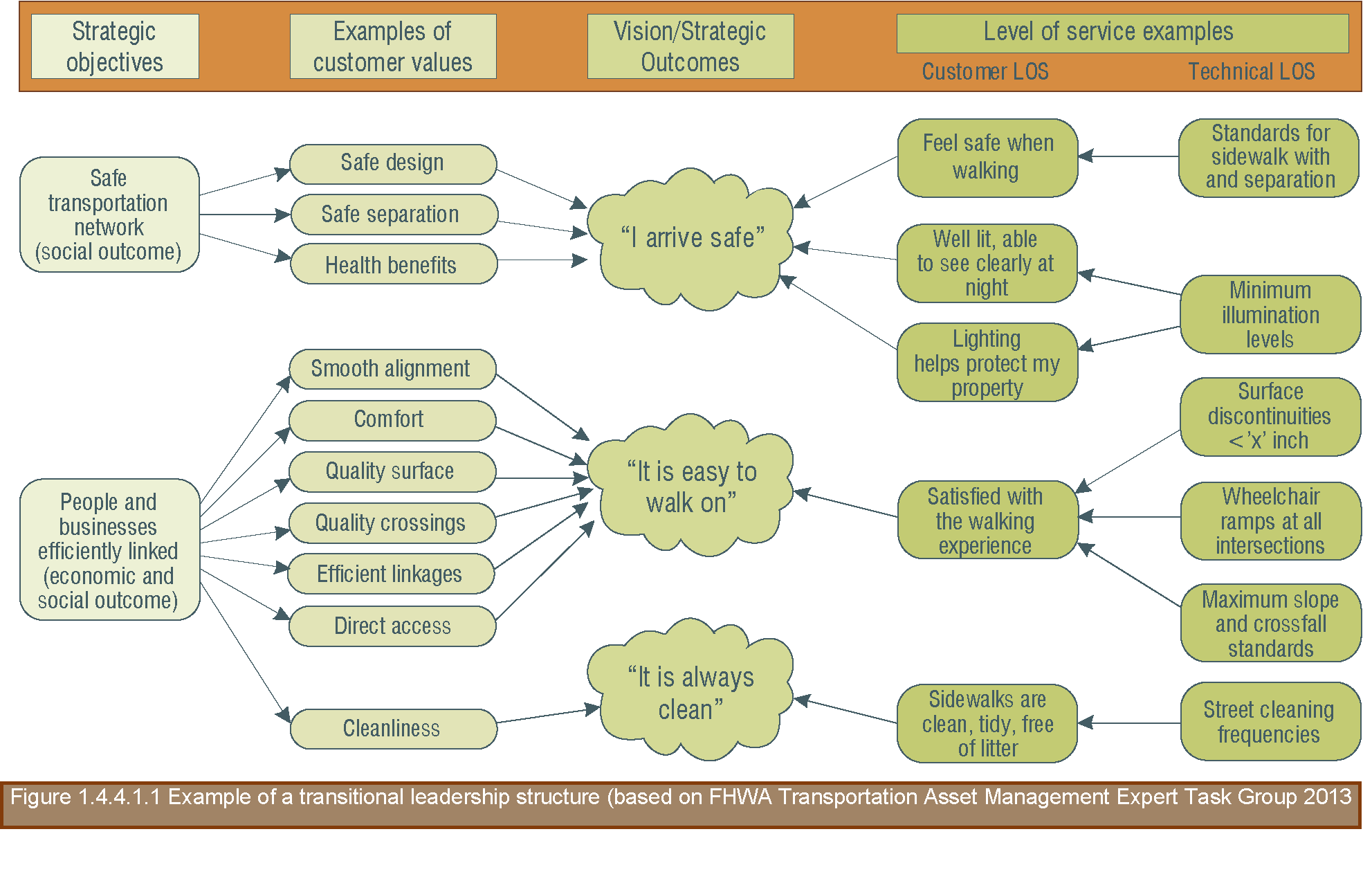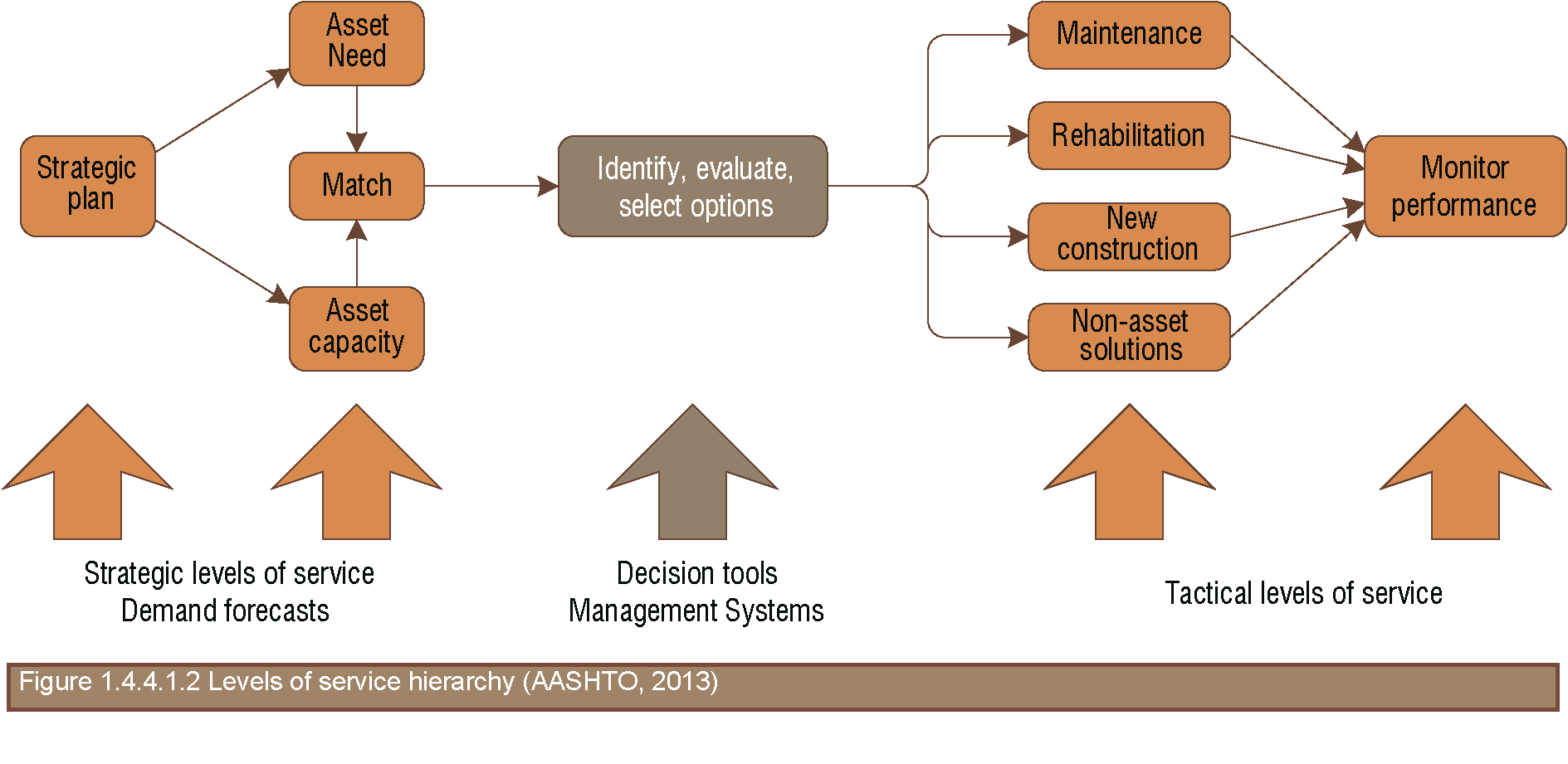
Asset Management Manual
A guide for practitioners!

Asset Management Manual
A guide for practitioners!
The asset management strategy sets out what the authority intends to do in order to manage its highway infrastructure assets; in developing the strategy, authorities/agencies should establish the mission and goals (asset management objectives). Management objectives usually identify the quality of service to be offered to stakeholders, which reflect the authority’s aspiration/availability and the expectations of stakeholder. Any asset service affecting any stakeholders in their roles as users, taxpayers, partners, elected officials, community residents, etc., may be included.
The quality of services likely to be placed in the future on the highway network should be incorporated in defining the levels of service. Therefore, levels of service are broad statements that describe the performance required for highway infrastructure assets, which are the right balance between stakeholder expectations, corporate vision and available funding (see figure 1.4.4.1.1).

At the proficient maturity level of asset management, levels of service can be split into two distinct categories: customers/stakeholders and technical.
Customer levels of service relate to how the customers and stakeholders receive the service in terms of tangible and intangible measures or criteria. They are expressed in terms that customers and stakeholders can understand and comprehend. Tangibles include the appearance of facilities, frequency of service disruptions, availability of service, frequency of crashes, etc. Examples of intangibles include speed of service, staff attitude and ease of dealing with the agency.
Definition of customer level of service
Levels of service are broad statements that describe the performance of highway infrastructure assets in terms that stakeholders can understand. They should relate to outcomes and cover key aspects of asset performance such as safety, serviceability and sustainability. They should consider the performance of the whole network rather than that of individual assets
Technical levels of service support both the customer’s and the agency’s strategic objectives; they are usually expressed in technical terms used by agency personnel or contractors. At the early stages of asset management (basic maturity level), some agencies use their performance measures as level of service statements.
Definition of technical level of service
Levels of service are statements or values of a key performance indicators that describe the performance of highway infrastructure assets in technical terms and are suitable for inclusion in maintenance delivery contracts or internal service agreements. They should relate to outcomes and cover key aspects of asset performance such as safety, serviceability and sustainability. They should consider the performance of the whole network rather than that of individual assets
Each road organization needs to determine the number and nature of its own levels of service, but in any case, levels of service should be developed based on themes that demonstrate the relationship between higher level corporate objectives and any stakeholder requirements for delivery of the service, the most common aspects/themes being (see e.g. law P.L. 112-141 in USA (AASHTO, 2013)): safety, serviceability (congestion reduction, system reliability, etc.), sustainability (environmental, aesthetics), accessibility (e.g. reduced project delivery delays) , financial performance, etc.
Levels of service can be developed through workshops, focus groups, public opinion surveys, collaborative working and market survey research
It should be noted that levels of service need to be developed in a hierarchy that reflects the increasing level of detail of planning activities (see figure 1.4.4.1.2).
Strategic - To provide a snapshot of overall performance, generally for stakeholder consumption;
Tactical - To inform decision making, particularly in terms of investment;
Operational - To provide information on operational aspects of the service, such as the speed of repairs or performance of service providers undertaking maintenance activities.
